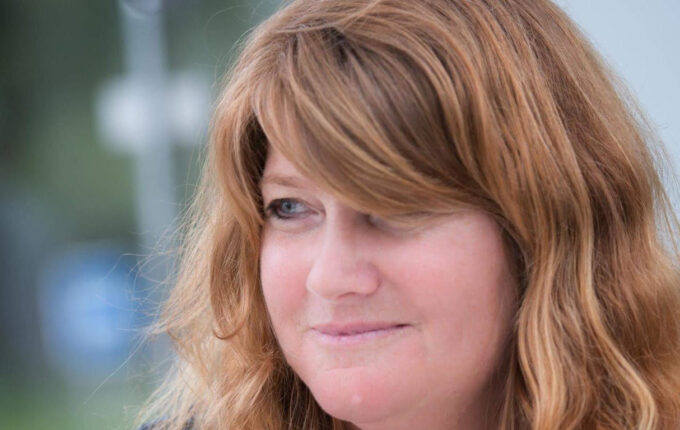Today, institutional investors are facing a whole range of risks that are not directly related to the market and don’t fit established risk models well. Investors would do well to look at the lessons learned from ESG to cope with these new risks, Sue Brake says
Today’s environment is one defined by transitions.
There is the energy transition towards a more environmentally-friendly and sustainable form of power generation.
There is the transition to a high-tech society as the artificial intelligence (AI) revolution is changing every part of modern life.
Finally, we are in a geopolitical transition, where the narrative has shifted from globalisation to security.
The shocks caused by any of these transitions are potentially existential to an institutional investor.
And to deal with this new world, Sue Brake, the former Chief Investment Officer of the Future Fund, believes that we can use what we’ve learned from ESG thinking.
Brake calls this broadening of ESG: ESG² (ESG-squared).
The added G here stands for geopolitics, but covers a broader spectrum of non-market risks. The fundamental idea behind the thinking is the need to develop a disciplined approach to managing these risks, rather than ad hoc divesting.

ESG² really came about at the time of the Russian invasion of Ukraine and the realisation that the way we (the institutional investment industry) had always thought about geopolitical risk just changed overnight
“ESG² really came about at the time of the Russian invasion of Ukraine and the realisation that the way we (the institutional investment industry) had always thought about geopolitical risk just changed overnight,” Brake says in an interview with [i3] Insights.
In particular, the way investors had previously dealt with sanctions changed dramatically as the war broke out. Whereas in the past this was predominantly a legal exercise to ensure funds complied with the letter of the law, now divestments were made suddenly and swiftly.
“The Western world went further than sanctions, which meant that it didn’t really fit the reasons that we had made exclusions in the past,” she says.
“The way everybody dealt with sanctions before was to go through a legal process, where you would work out what exactly were the sanctioned entities and you would be very careful in making sure what was sanctioned and what was not, because it was so complex and interrelated.
“It would very much be an operational or a legal process in the background.
“And what became very obvious this time was that not only could it not be just the letter of the law, but we also needed to think about what was exactly in the portfolio, how it was linked to, for example, oligarchs, and this needed to happen with increased urgency.
“And as I was thinking about the need to be disciplined about that rather than willy-nilly throwing things out of the portfolio, it occurred to me that we already have a process, a really good process, for thinking about how to do that. And that was ESG. So I coined the term ESGG, which later became ESG²,” she says.
Non-market Risks and Modelling
Brake is currently working as a strategic adviser to a number of large global asset owners, including the Monetary Authority of Singapore, where she is a member of the Investment and Risk Advisory Panel, as she waits for her next full time executive role.
In her interactions with various institutional investors, she has seen that many of the non-market risks they are facing don’t fit well into traditional investment risk models.
“We used to have our risk models that we were happily tweaking, but then we had this one thing that didn’t suit our models and that was climate,” she says. “Well, we now have more of these awkward issues.”
Investors need to look at non-market risks in two ways: top down and bottom up. The best way to address these risks top down is through scenario analysis, which Brake says is a helpful albeit fairly blunt tool.
But a bottom-up approach needs to incorporate techniques from ESG assessments of companies and apply them to the broader set of non-market risks to see who is likely to be impacted and to what extent.
“Since COVID-19, it’s become obvious that it’s not just climate anymore. There are a number of tipping points that could potentially be systemic in the world of investing,” she says.

We used to have our risk models that we were happily tweaking, but then we had this one thing that didn't suit our models and that was climate,” she says. “Well, we now have more of these awkward issues
“If we’re going through an energy transition, then that is going to affect everything, every financial asset. And we’re also going through an AI revolution that is going to affect every financial asset in an interrelated but different way.
“And then we have geopolitical events that could tip us into investment blocks alongside trading blocks. Or it might not, but everyone has agreed that we are no longer in the unipolar world that we once were.”
Ultimately, it means investors need to be more thoughtful about portfolio construction on a 10 or 20 year horizon, and can’t simply rely on the long run equity-risk premium and the diversification of fixed income to drive returns.
“It just highlights a broader perspective of risk and the need for resilience. You need to have a top-down focus on it through your scenarios, but also a bottom-up focus, which is where I really look at what we have already built in ESG,” she says.
__________
[i3] Insights is the official educational bulletin of the Investment Innovation Institute [i3]. It covers major trends and innovations in institutional investing, providing independent and thought-provoking content about pension funds, insurance companies and sovereign wealth funds across the globe.


